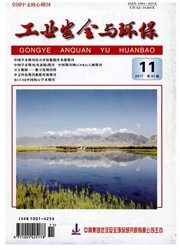

 中文摘要:
中文摘要:
在内蒙古锡林河流域建立典型羊草植被覆盖下围封、冬季放牧和过度放牧试验区以及典型大针茅植被覆盖下围封和持续放牧试验区。在长135 m,宽105 m,共计100个测量点的空间区域测量土壤剪切力并研究其空间变化情况。结果表明,土壤含水量是引起区域土壤剪切力变化的主要因素,而放牧是引起土壤剪切力空间变异的关键因子,其途径主要是通过改变土壤结构、土壤含水量以及植被状况。过度放牧严重破坏土壤结构导致的土壤剪切力最小。适度放牧因局部干扰,土壤剪切力的空间分布具有清晰的递变性,但这种递变性在干旱条件下减弱。而围封仅在土壤含水量与植被根系的作用下并未形成类似前者的空间分布形式。这说明在适度放牧的干预下,土壤剪切力的空间分布具有相对稳定性。
 英文摘要:
英文摘要:
To understand the change of soil shear strength and its' spatial distribution,un- grazed,winter grazing and heavy grazing under Leymus chinensis,and un- grazed and continuous grazing under Stipa grandis,were respectively investigated in each plot which covered an area of 105 m × 135 m and positioned 100 points. The results showed that soil water content was the key factor to change the magnitude of soil shear strength. However grazing played an important role in the spatial variability and distribution of soil shear strength through the shift of soil structure,soil water content and vegetation coverage. Due to mero- effect of appropriate grazing intensities the spatial distribution of soil shear strength showed a hierarchy change but heavy grazing failed within the destructive soil structure caused by inappropriate heavy grazing. However such spatial distribution was not obvious in dry condition in these grazing plots. Un- grazed also did not shape such stable spatial distribution which was controlled by the combination effect of soil water content and vegetation coverage. In a conclusion,the appropriate grazing intensities could induce the relatively stable spatial distribution of soil shear strength.
 同期刊论文项目
同期刊论文项目
 同项目期刊论文
同项目期刊论文
 期刊信息
期刊信息
